Mobile Technologies in Libraries
LIBRARY INFORMATION TECHNOLOGY ASSOCIATION (LITA) GUIDES
Marta Mestrovic Deyrup, PhD
Acquisitions Editor, Library Information and Technology Association, a division of the American Library Association
The Library Information Technology Association (LITA) Guides provide information and guidance on topics related to cutting edge technology for library and IT specialists.
Written by top professionals in the field of technology, the guides are sought after by librarians wishing to learn a new skill or to become current in todays best practices.
Each book in the series has been overseen editorially since conception by LITA and reviewed by LITA members with special expertise in the specialty area of the book.
Established in 1966, the Library and Information Technology Association is the division of the American Library Association (ALA) that provides its members and the library and information science community as a whole with a forum for discussion, an environment for learning, and a program for actions on the design, development, and implementation of automated and technological systems in the library and information science field.
Approximately 25 LITA Guides were published by Neal-Schuman and ALA between 2007 and 2015. Rowman & Littlefield took over publication of the series beginning in late 2015. Books in the series published by Rowman & Littlefield are
Digitizing Flat Media: Principles and Practices
The Librarians Introduction to Programming Languages
Library Service Design: A LITA Guide to Holistic Assessment, Insight, and Improvement
Data Visualization: A Guide to Visual Storytelling for Librarians
Mobile Technologies in Libraries: A LITA Guide
Mobile Technologies in Libraries
A LITA Guide
Ben Rawlins
Rowman & Littlefield
Lanham Boulder New York London
Published by Rowman & Littlefield
A wholly owned subsidiary of The Rowman & Littlefield Publishing Group, Inc.
4501 Forbes Boulevard, Suite 200, Lanham, Maryland 20706
www.rowman.com
Unit A, Whitacre Mews, 26-34 Stannary Street, London SE11 4AB
Copyright 2016 by American Library Association
All rights reserved . No part of this book may be reproduced in any form or by any electronic or mechanical means, including information storage and retrieval systems, without written permission from the publisher, except by a reviewer who may quote passages in a review.
British Library Cataloguing in Publication Information Available
Library of Congress Cataloging-in-Publication Data
Names: Rawlins, Ben, 1982 author.
Title: Mobile technologies in libraries : a LITA guide / Ben Rawlins.
Description: Lanham : Rowman & Littlefield, [2016] | Series: Library Information Technology Association (LITA) guides | Includes bibliographical references and index.
Identifiers: LCCN 2016014799 (print) | LCCN 2016031672 (ebook) | ISBN 9781442264236 (hardback) | ISBN 9781442264243 (paperback) | ISBN 9781442264250 (eBook) | ISBN 9781442264250 (electronic)
Subjects: LCSH: Mobile communication systemsLibrary applications. | LibrariesInformation technology. | Library Web sitesDesign.
Classification: LCC Z680.5 .R393 2016 (print) | LCC Z680.5 (ebook) | DDC 025.0422dc23
LC record available at https://lccn.loc.gov/2016014799
 The paper used in this publication meets the minimum requirements of American National Standard for Information SciencesPermanence of Paper for Printed Library Materials, ANSI/NISO Z39.48-1992.
The paper used in this publication meets the minimum requirements of American National Standard for Information SciencesPermanence of Paper for Printed Library Materials, ANSI/NISO Z39.48-1992.
Printed in the United States of America
In memory of Momyou will always be with me.
Preface
Mobile technology has expanded to become an essential part of our lives in less than a decade. The introduction of the iPhone in 2007 opened the flood gates for the mobile revolution that would change the way we consume information and connect with the world around us. Shortly after the introduction of the iPhone, Apple and then Google released what would become the two most popular mobile operating systems in the world: iOS and Android. As devices like the iPhone and other smartphones began to gain more traction and adoption among consumers, businesses started to shift focus to the mobile platform to reach users in this ever-increasing medium. Apple has become a company whose success is built on mobile hardware and software. Google brings in a ton of revenue from mobile ads. Facebook has expanded its reach in mobile with mobile ads and the acquisition of mobile-only companies like Instagram.
In addition to the changes in business, mobile has changed the way that we develop websites. It has led to the rise of responsive web design, which is a mobile-first approach to designing websites. This has brought about the introduction of popular responsive frameworks such as Bootstrap. Wearable technology is starting to emerge as a serious category within the realm of mobile technology. All signs point to continued expansion of mobile technology.
With the expansion of mobile, libraries have seized the opportunities that mobile technology offers and that are the premise of this book. With more and more of our users coming into the library equipped with mobile devices, it is essential that libraries provide services and resources and develop the skills necessary to reach this user base. Libraries have done a good job of this, but with the continued expansion of mobile technology there are more opportunities to come. This book explores different ways that libraries have incorporated mobile technology in their services to reach their users. Some topics discussed in this book include
- the impact of mobile technology
- mobile technology and library services
- responsive web design
- wearable technology
- the future of mobile technology
Mobile Technologies in Libraries: A LITA Guide is written for library staff interested in how mobile technologies have changed the way we access, and expect to access, information, as well as how libraries can incorporate and adapt to mobile technology. This book consists of eight chapters:
- Chapter 1, The Impact of Mobile Technology, looks at the overall impact of mobile technology and how companies like Apple, Google, and Facebook have seized the opportunities of the mobile revolution to help build their empires.
- Chapter 2, The Digital Divide, Libraries, and Mobile Devices, discusses the digital divide and how libraries are working to bridge the divide. This chapter also looks at the role mobile technology plays in helping to decrease that divide.
- Chapter 3, Mobile Technology and Library Services, discusses how libraries have incorporated mobile technology into services and how they are reaching mobile users. This includes a discussion on why mobile is important for libraries and examples of mobile websites, mobile applications, and other services, like lending devices, that libraries are providing to their users.
- Chapter 4, Social Media, Mobile Technology, and Libraries, discusses the role of social media and how libraries are using various social media outlets to reach users.
- Chapter 5, Responsive Web Design, focuses on how mobile technology has changed the way that we develop websites. It has led to the rise and popularity of responsive web design and the creation of responsive frameworks such as Bootstrap.
- Chapter 6, What Library Vendors Are Offering, discusses what library vendors are providing in terms of mobile solutions. Some vendors are focusing on developing stand-alone mobile websites and responsive websites, others are developing mobile applications for both iOS and Android, and some vendors are developing both mobile web interfaces and mobile applications.
Next page
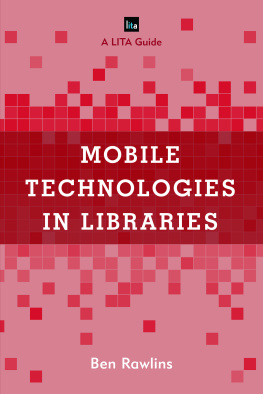
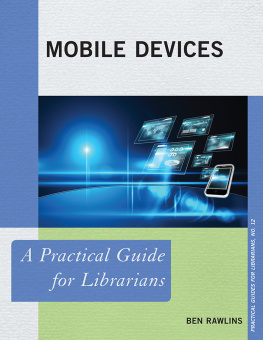


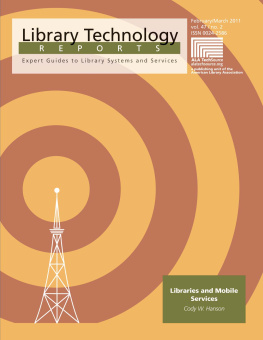
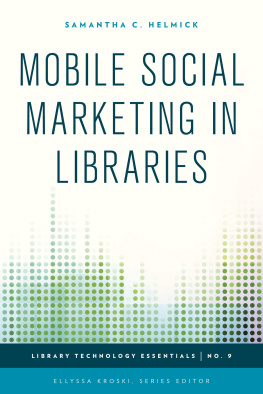

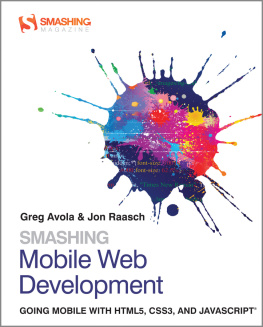
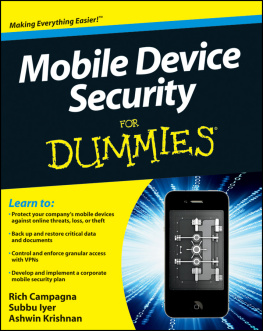
 The paper used in this publication meets the minimum requirements of American National Standard for Information SciencesPermanence of Paper for Printed Library Materials, ANSI/NISO Z39.48-1992.
The paper used in this publication meets the minimum requirements of American National Standard for Information SciencesPermanence of Paper for Printed Library Materials, ANSI/NISO Z39.48-1992.